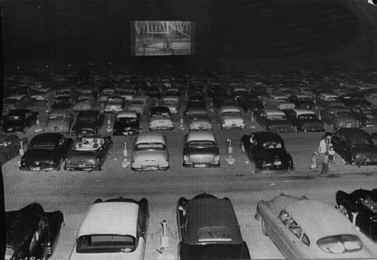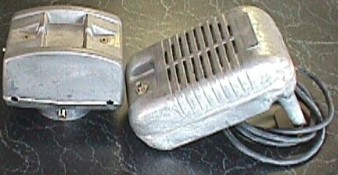Mom Said "No Drive In Movies!"
God gave us memories that we might have roses in December. ~J.M. Barrie
Submarine Races Anyone?
What Is A Drive in You Ask?
A drive-in theater is a form of cinema structure consisting of a large screen, a projection booth, a concession stand and a large parking area for automobiles. The screen can be as simple as a wall that is painted white, or it can be a complex steel truss structure with a complex finish. Within this enclosed area, customers can view movies from the privacy and comfort of their cars. Some drive-in theater managers added children's playgrounds between the screen and the first row of cars. Concrete patios for lawn chairs were available at some drive-in theaters. Originally, audio was provided by speakers on the screen and later by an individual speaker hung from the window of each car, which would be attached by a wire.
The First Drive-In Movie Was in New Jersey

The world's first drive-in movie theater opens in Camden, New Jersey.
The concept was developed by Richard Hollingshead Jr., who experimented with various projection and sound techniques in the driveway of his house. Using a 1928 Kodak projector mounted on the hood of his car and aimed at a screen pinned to some trees, Hollingshead worked out the spacing logistics to make sure that all cars had an unobstructed view of the screen.
He received a patent for his idea in May 1933 and opened his first drive-in theater only three weeks later. They quickly fanned out across the country.
Their popularity soared after World War II, when Americans started having kids in droves. (Can you say "Boom"?) The drive-in offered cheap family entertainment, a place where parents could take the kids without having to shell out for a baby sitter, or worry about them bothering other patrons.
In fact, that was Hollingshead's original hook: "The whole family is welcome, regardless of how noisy the children are."
Drive-in theaters tended toward B movies -- Muscle Beach Party, Tarzan, Creature From the Black Lagoon and stuff like that -- and always included a snack stand and a play area where the kids could go when they got bored. Which is what kids do.
Another feature of the early drive-in theater was the tinny sound, delivered to the car through a single, monaural speaker. As the technology improved over time -- the car's FM radio became the receiver in some cases -- so did the sound.
The drive-in's heyday lasted from the late 1950s until the mid-'60s, when nearly 5,000 theaters were operating in the United States. No cultural survey of the period would be complete without including the iconic drive-in movie theater.
Since drive-ins offered a certain amount of privacy, making out in the back seat of the car was a rite of passage for Teenus americanus, circa 1963. You could get it on in the front seat, too, if you had a column shift, or even a bench seat with four on the floor. But bucket seats? Forget it.
The rising cost of real estate was one of the factors that led to the decline of the drive-in. Especially for those theaters located in urban areas or heavily populated suburbs, the cost of doing business was becoming prohibitive. The popularity of walk-in theaters and video rentals didn't help, either.
Nevertheless, drive-ins endure. Although fewer than 500 remain today, the industry appears to have stabilized. Those that survive often rely on additional sources of income to pay the rent, hence the popularity of drive-in-theater parking lots as flea markets, swap meets, motorcycle schools and even outdoor churches.
Source: Drive-ins.com, DriveinMovie.com, Wikipedia
The Studio Drive In Located In Inglewood; Now Gone And Forgotten

Any flick could be tolerated, as long as it was viewed at a Drive In Theater.
Horror and Sci Fi were always my favorites. They also made it a lot easier to get your date to scoot up close.
Of course by today's s
tandards those old movies were pretty tame and pretty lame
. Back then they could scare the fool out of you. I still enjoy watching them once in a while. They don't frighten me anymore.
Really they don't.
So sad to see the outdoor, big screens go the way of the dinosaur. They were really an adventure. We (me, my friends, etc.) would eagerly await the weekend and the new movie showing at the Drive In. Yes there was a new one each week and most of the time a double feature. On special times there might be a horror, dusk until dawn showing of four or more flicks. Talk about getting your money's worth.
The 1950's

In the 1950s, the greater privacy afforded to patrons gave drive-ins a reputation as immoral, and they were labeled "passion pits" in the media.The drive-in's peak popularity came in the late 1950s and early 1960s, particularly in rural areas, with some 4000 drive-ins spreading across the United States. Among its advantages was the fact that a family with a baby could take care of their child while watching a movie, while teenagers with access to autos found drive-ins ideal for dates. Revenue was more limited than regular theaters since showings can only start at twilight. There were abortive attempts to create suitable conditions for daylight viewing, such as large tent structures, but nothing viable was developed.
In the 1950s, the greater privacy afforded to patrons gave drive-ins a reputation as immoral, and they were labeled "passion pits" in the media.
Sometimes, even at a dollar a carload pricing, we couldn't resist the thrill of sneaking past the admission booth, hidden in the trunk of a car.